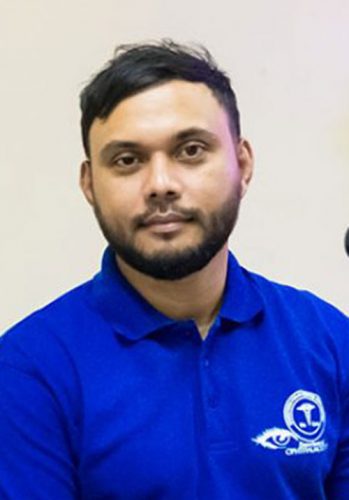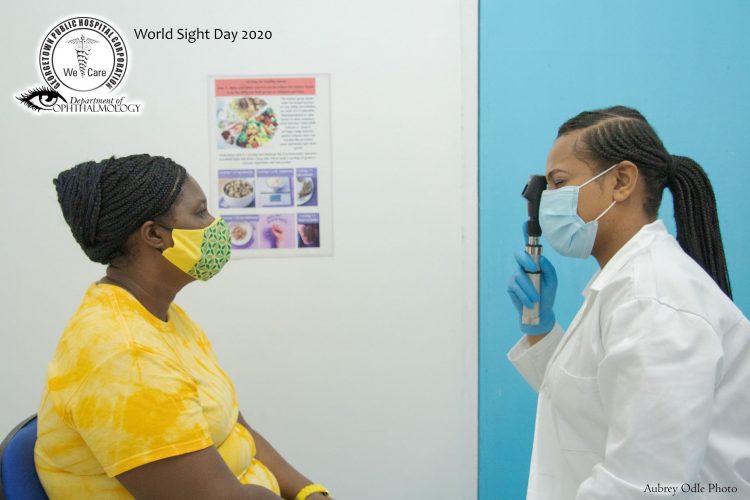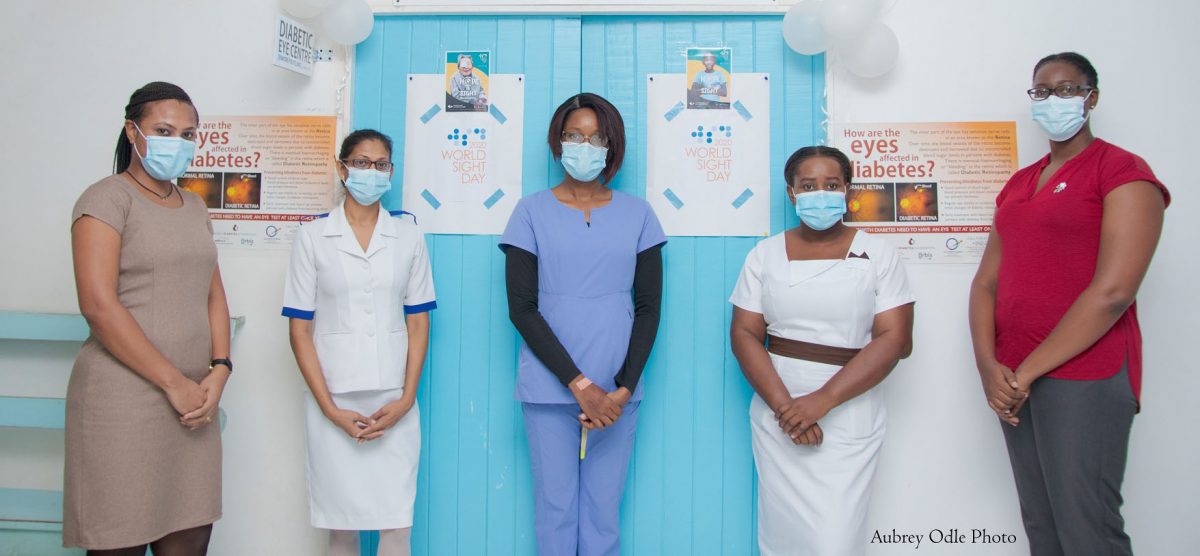A new diabetic eye centre has been opened at the Enmore Polyclinic to provide free screening for diabetics and persons at risk of diabetes-related eye disease.
The facility, which is second Diabetic Eye Centre (DEC), is expected to increase the capacity and demand for care of diabetic eye disease (DED) in rural areas and adding to the expansion of care. The DECs, which are intended to be easily accessible to the general public, provide free diabetic eye screening along with general eye screening to identify other sorts of eye conditions, including cataracts and glaucoma. DECs are to be run by locally trained optometrists who have undergone specialised training in diabetic eye screening and grading via the use of retinal photography. The use of retinal photography is the current worldwide standard for early detection of diabetic retinopathy.

Construction of the new DEC ended in August 2020. Its establishment is in keeping with the Guyana Diabetes Care Project (GDCP) programme, funded by World Diabetes Foundation (WDF). The programme is a multi-component approach to reducing the burden of type 2 diabetes. It was led by the University of Toronto in collaboration with multiple stakeholders both locally and internationally, and focusses on diabetic eye screening and treatment in Guyana. This component was also supported by Orbis International and the Department of Ophthalmology at the Georgetown Public Hospital (GPH). The GPH, which is the national referral hospital in Guyana, became the pilot site of the first established diabetic retinopathy screening and laser centre. The centre provided free laser treatment to the general public for DED for the first time in the public system.
The Clinical Director of the Guyana Diabetic Retinopathy

Programme, Dr Shailendra Sugrim, the current Head of Department, has been leading the team of eye care professionals in successfully implementing these projects. Dr Sugrim, during a telephone interview, detailed the importance of awareness of diabetes and the damage it causes to the human body.
He explained that the body needs sugar, which is a basic building block for energy and it is primarily obtained from food consumed. The food is converted into glucose after being stored in the pancreas, which produces insulin which acts to lower blood sugar or regulate it as it is transported in the blood to all parts of the body. However, for persons who don’t have enough insulin or where the insulin does not perform its function properly, the glucose is not absorbed by the tissues of the organs because it clogs the blood vessels. The blood is also not able to flow to the organs and this causes tissue death. “[So] in a nutshell, diabetes in the body is the body not having enough insulin or the insulin is unable to perform its function well enough,” Dr Sugrim explained. There are two types of diabetes: type 1 diabetes, which is a chronic condition in which the pancreas produces little or no insulin; and type 2, which is when the body either resists the effects of insulin or doesn’t produce enough insulin to maintain normal glucose levels.
The Clinical Director said that this chronic disease causes damage throughout the body but the damage can be detected early on if persons are aware and take proper care of their body. He said that exercise and diet adds tremendously to the lower risk of diabetes and diseases associated with diabetes in both diagnosed patients and persons who do not suffer from diabetes. This newspaper was told that a simple blood-sugar test could help persons know their blood sugar levels and follow up on ways to live a healthy life. Dr Sugrim advised that persons keep up with visits to their physicians and nutritionists as well as doing eye care checkups. Early detection of diabetes-related diseases allows for the opportunity to initiate treatment to prevent them, one of which Dr Sugrim spoke on is blindness from diabetes. He said that the programme he leads is heavily concentrated on prevention of complications of diabetes through the promotion of good nutritional habits. Hence, there is a close collaboration with the staff of GPH Nutrition Centre who assist patients to manage their diabetes through healthy nutritional practices. Notably, the nutritionists have also trained the optometrists and eye care professionals on the importance of counselling patients about their diet.
Focusing on the DED -Diabetic Retinopathy (DR), Dr Sugrim said that the damaging of the blood vessels in the eye, caused by diabetes, has three treatment options. The only one of the three offered at GPHC is laser treatment. He explained that what usually takes place is that a new blood vessel replaces the damaged one but that it eventually starts bleeding. To stop the haemorrhaging, the vessel is burn sealed by the laser. The other two procedures which can be done privately are:
Injection or medical treatment – Performed when the eye is injected to decrease the growth of the vessel and to remove fluid from the eye. This can be done at a private hospital but it is very costly, he said.
Surgery – Performed when the tissue is so badly damaged that eye-surgeons have to perform surgery in the back of the eye. It is also expensive and unfortunately, Guyana does not have the equipment to perform this surgery. However, he said that this is only necessary when the damage is progressive. But that majority of the time, because of lack of awareness, Guyanese patients are at the progressive state. Notably, DR is a leading cause of permanent blindness worldwide.
It was further disclosed by the doctor that 11% of the Guyanese population is estimated to be diabetic, an amount that is above the average in South America countries and similar to the high levels in the Caribbean. Further, it is estimated that two thirds of patients who have diabetes in Guyana are not yet diagnosed.
World Diabetes Day will be observed on November 14 under the theme, “Family and Diabetes”. The theme is expected to be used as a springboard for spreading awareness of the impact the disease has, not only on those diagnosed, but their families as well.









